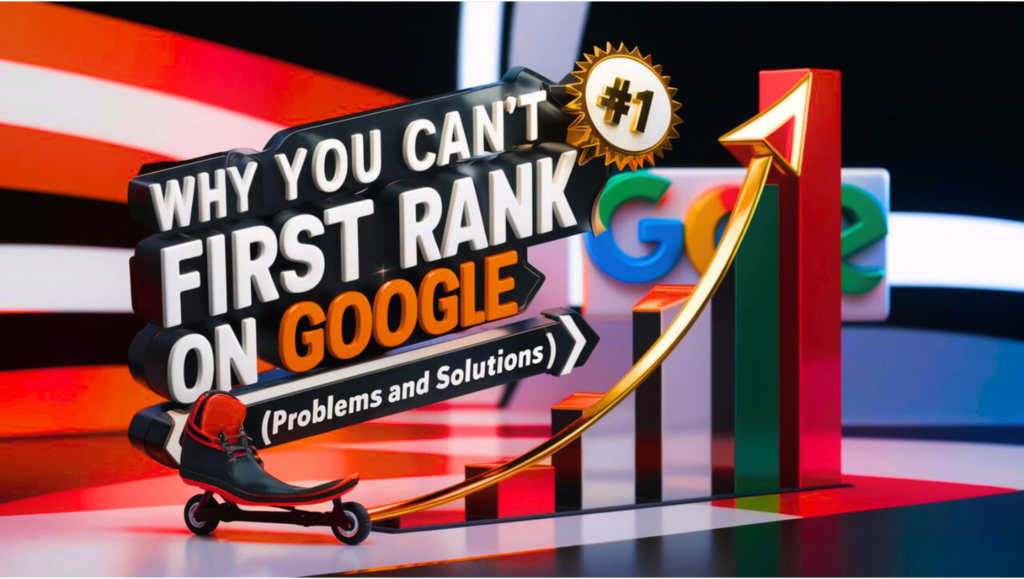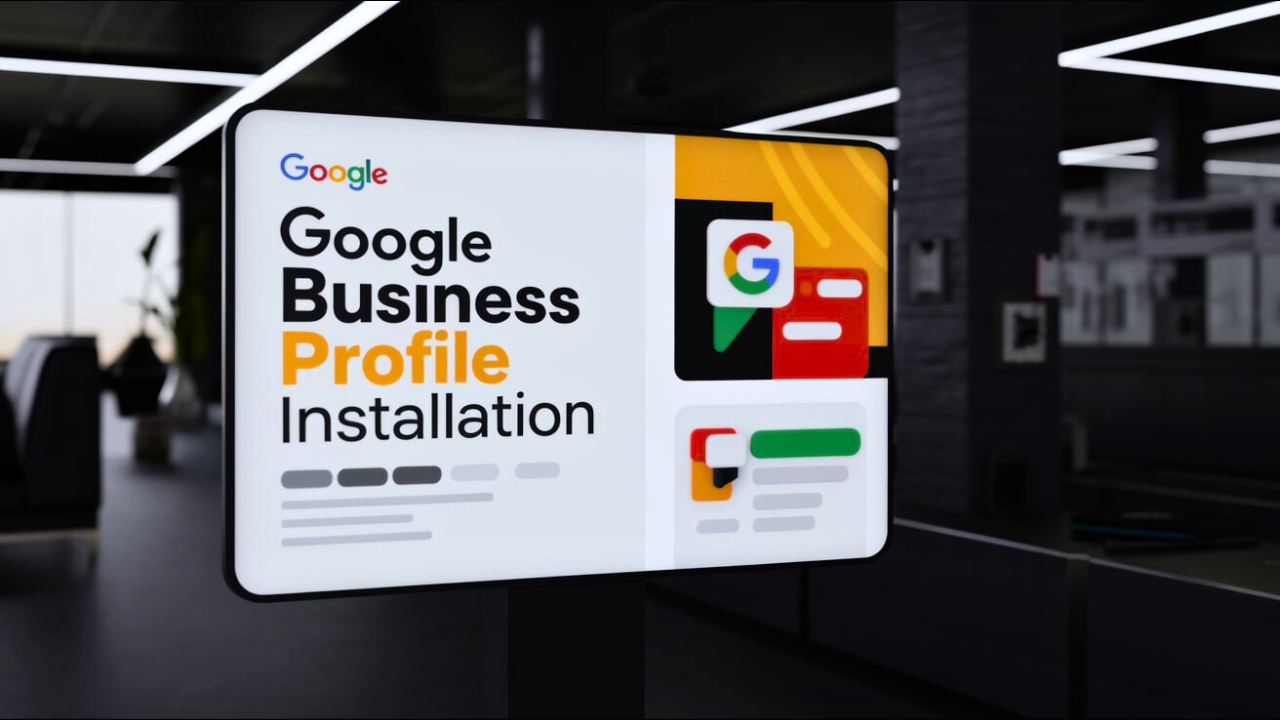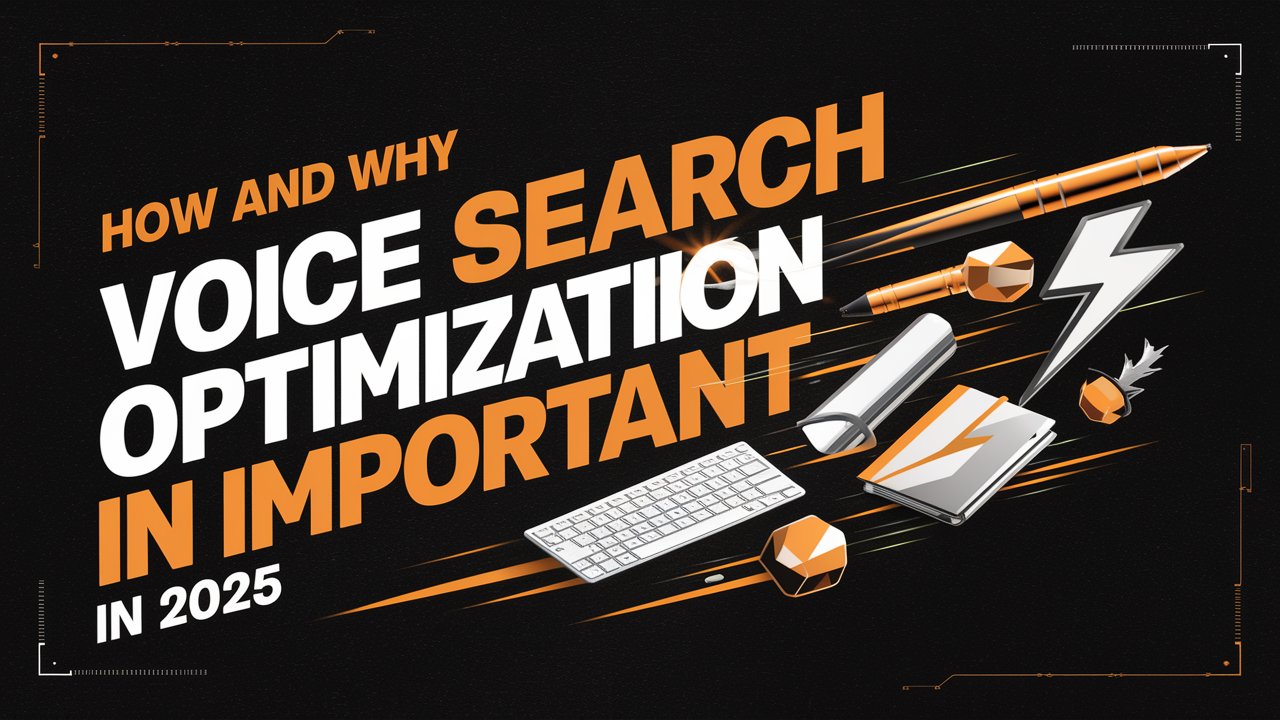Why You’re Not Ranking #1 on Google (Identifying the Problems)
Introduction
Hi, I’m Ravi Singh Rajput. I’m a passionate SEO expert dedicated to helping businesses achieve their digital marketing goals. Have you ever wondered why your website isn’t able to secure that coveted #1 spot on Google’s search engine results pages (SERPs)? In this blog titled “Why You Can’t Get the First Spot on Google,” I’ll walk you through the common pitfalls that can hold your site back and provide actionable insights to improve your rankings.
Reaching the top of Google requires more than just publishing content. It’s a strategic process that involves understanding Google’s algorithms, optimizing for user intent, and consistently delivering value. Let’s discuss the challenges and solutions that will help you reach the top.
Understanding the Basics of SEO Ranking
SEO (Search Engine Optimization) is the practice of improving a website’s visibility in organic search engine results. When you search for something on Google, you’ll see a list of websites. The higher your website ranks in these results, the more likely people are to find it.
Key Factors Affecting SEO Ranking
Relevant and High-Quality Content:
- Keyword Research: Identifying the words and phrases people use to search for your products or services.
- Content Creation: Producing informative, engaging, and keyword-optimized content.
- Content Updates: Regularly updating your content to keep it fresh and relevant.
On-Page SEO:
- Title tags: creating descriptive and keyword-rich titles for each page.
- Meta Descriptions: Writing concise and compelling descriptions that summarize the page’s content.
- Header Tags (H1, H2, H3): Structuring your content with clear headings.
- Image Optimization: Using descriptive file names and alt text for images.
- URL Structure: Creating clean and keyword-rich URLs.
Technical SEO:
- Website Speed: Ensuring your website loads quickly.
- Mobile-Friendliness: Optimizing your website for mobile devices.
- Site Structure: organizing your website’s content in a logical way.
- XML Sitemap: Creating a sitemap to help search engines understand your website’s structure.
- Robots.txt: Controlling how search engines crawl your website.
Off-Page SEO:
- Backlinks: Acquiring high-quality links from other websites to your own.
- Social Media: Promoting your content on social media platforms.
- Local SEO: optimizing your website for local search results.
How Search Engines Rank Websites
Search engines use complex algorithms to rank websites. Some of the key factors they consider include:
- Relevance: How well does your content match the user’s search query?
- Authority: How trustworthy and authoritative is your website?
- User Experience: How easy is it for users to find information on your website?
- Backlinks: How many other websites link to your website?
Problem 1: Targeting the Wrong Keywords
Explanation:
Keyword research is the basis of any SEO strategy. If you’re targeting overly competitive or irrelevant keywords, your efforts may be in vain. For example, targeting broad terms like “shoes” is much harder than targeting “best running shoes for women under $100.”
Solution:
Use tools like Google Keyword Planner, Ahrefs, or SEMrush to identify keywords with high search volume but low competition.
Focus on long-tail keywords that reflect user intent.
Give priority to keywords with commercial or informational intent relevant to your business.
Analyze competitors’ keywords to discover opportunities.
Problem 2: Poor Quality Content
Explanation:
Content is king, but not all content reigns equally. Thin, poorly written, or generic content fails to engage users and lacks the depth needed to satisfy Google’s E-E-A-T (Experience, Expertise, Authority, Trustworthiness) criteria.
Solution:
Write comprehensive, well-researched articles that solve real problems for your audience.
Use data, case studies, and examples to add authority.
Update old content to keep it fresh and relevant.
Incorporate multimedia like videos, infographics, and images to enhance content engagement.
Problem 3: Weak Backlink Profile
Explanation:
Backlinks are a significant ranking factor, but not all backlinks are created equal. Low-quality or spammy links can harm your site’s reputation.
Solution:
Build high-quality backlinks by creating shareable content and reaching out to reputable websites.
Use tools like Moz or Ahrefs to audit your backlink profile and disavow toxic links.
Leverage guest posting, broken link building, and HARO (Help A Reporter Out) for ethical link purchase.
Develop link-worthy content, such as original research or comprehensive guides.
Problem 4: Technical SEO Issues
Explanation:
Even the best content can’t rank if your website isn’t technically sound. Common issues include slow loading times, poor mobile optimization, and broken links.
Solution:
Use tools like Google Search Console and PageSpeed Insights to identify and fix technical issues.
Ensure your website is mobile-friendly with responsive design.
Optimize for Core Web Vitals:
Loading: Fast page load times.
Interactivity: minimal delay in user interactions.
Visual Stability: Content should not shift unexpectedly.
Implement HTTPS for security and boost trustworthiness.
Problem 5: Ignoring User Intent
Explanation:
Google’s algorithm prioritizes content that aligns with user intent. If your content doesn’t answer the user’s query effectively, it won’t rank well.
Solution:
Analyze the search intent behind your target keywords (informational, navigational, or transactional).
Structure your content to address questions and provide solutions clearly.
Use tools like AnswerThePublic to understand common queries in your niche.
Create FAQ sections to address specific user concerns.
Problem 6: Lack of Local SEO Optimization (For Local Businesses)
Explanation:
If you run a local business, failing to optimize for local search terms can cost you valuable traffic.
Solution:
Claim and optimize your Google My Business profile.
Include local keywords in your content and metadata.
Encourage customers to leave reviews on Google and other platforms.
Ensure consistent NAP (Name, Address, Phone) information across directories.
Problem 7: Overlooking On-Page SEO
Explanation:
On-page SEO refers to optimizing individual pages for better rankings. Neglecting elements like title tags, meta descriptions, and header tags can hurt your SEO efforts.
Solution:
Write compelling, keyword-rich meta titles and descriptions.
Use H1, H2, and H3 tags to structure your content.
Optimize images with alt text and compress them for faster loading.
Add schema markup to enhance search engine understanding of your content.
Problem 8: Reliable Content Availability
Explanation:
Google rewards websites that publish high-quality content consistently. Irregular posting can signal inactivity.
Solution:
Create a content calendar to plan and publish regularly.
Repurpose old content into new formats (e.g., videos, infographics).
Monitor performance metrics to refine your content strategy.
Collaborate with industry experts for guest blogs to diversify content.
Problem 9: Weak Internal Linking
Explanation:
Internal linking helps Google understand the structure of your site and distributes link equity. Without a strong internal linking strategy, your pages may struggle to rank.
Solution:
Link to relevant internal pages within your content.
Use descriptive anchor text for links.
Regularly audit your internal links to ensure they’re working.
Use a silo structure to organize content and improve link hierarchy.
Problem 10: Ignoring Analytics and Data
Explanation:
If you’re not tracking your SEO performance, you can’t identify what’s working and what’s not.
Solution:
Set up Google Analytics and Google Search Console to monitor traffic and keyword rankings.
Analyze bounce rates, time on site, and conversion rates to optimize content and user experience.
Use heatmaps to understand user behavior on your site.
Track competitor performance and adapt your strategy accordingly.
Conclusion
Ranking #1 on Google is no small feat, but it’s achievable with the right strategy and dedication. By addressing the issues outlined above, you’ll be well on your way to improving your search visibility and driving more organic traffic.
Remember, SEO is a race, not a sprint. Consistency, patience, and a commitment to providing value will set you apart from the competition. Stay updated with the latest trends and algorithms to maintain your edge.
If you have any questions or need personalized assistance, feel free to reach out. Together, we can unlock the full potential of your website.
Ravi Singh Rajput
Frequently Asked Questions (FAQs)
1. What is the most profitable online business in 2025?
E-commerce and online courses are the most profitable online business options due to high demand and scalability.
2. How can I start an online business in India?
Select your niche, create a website and use platforms like Shopify or Upwork.
3. What skills are needed for freelance services?
Skills like writing, graphic design, web development and digital marketing are quite useful for freelancing.
4. Which online business is best for beginners?
Affiliate marketing and freelancing are best for beginners, as they involve low investment and flexibility.




